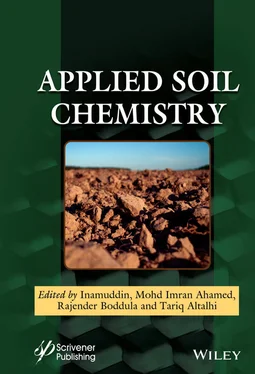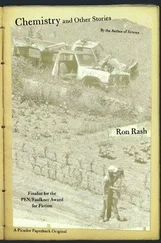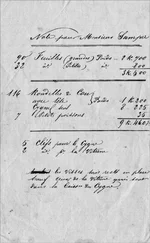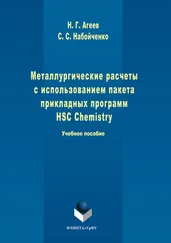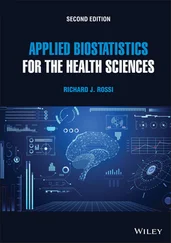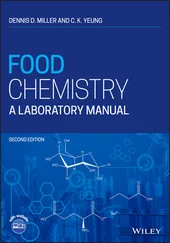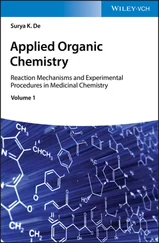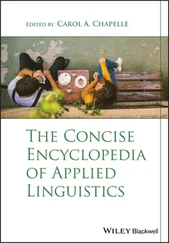1 ...6 7 8 10 11 12 ...15 10. Wilcox, J., Renforth, P., Kraxner, F. (eds.), The Role of Negative Emission Technologies in Addressing Our Climate Goals . Lausanne, Frontiers Media SA, https://scholar.google.com/scholar_url?url=https://www.frontiersin.org/research-topics/9752/pdf%3Futm_source%3Dfweb%26utm_medium%3D-nblog%26utm_campaign%3Dba-sci-ebook--20200300&hl=en&sa=T&oi=gsb-gga&ct=res&cd=0&d=16349358176583991556&ei=ROT-X9fXEYfPmAG-w14KwCw&scisig=AAGBfm1dUf9bJFQ1f8RVUxAXc4tQNKEVNQ, 2020.
11. Batjes, N.H., Total carbon and nitrogen in the soils of the world. Eur. J. Soil Sci. , 65, 1, 10–21, 2014.
12. Lal, R., Soil carbon stocks under present and future climate with specific reference to European ecoregions. Nutr. Cycling Agroecosyst. , 81, 2, 113–127, 2008.
13. Lal, R., Follett, R., Kimble, J., Achieving soil carbon sequestration in the United States: a challenge to the policy makers. Soil Sci. , 168, 12, 827–845, 2003.
14. Hester, R.E. and Harrison, R.M. (Eds.), Carbon capture: Sequestration and storage (Vol. 29). Royal Society of Chemistry, https://pubs.rsc.org/en/content/ebook/978-1-84755-917-3, 2010.
15. Anderson, M.C., PRO. J. Gynecol. Surg. , 7, 3, 191–194, 1991.
16. Schlesinger, W.H. and Andrews, J.A., Soil respiration and the global carbon cycle. Biogeochemistry , 48, 1, 7–20, 2000.
17. Hayes, M.H. and Clapp, C.E., Humic substances: considerations of compositions, aspects of structure, and environmental influences. Soil Sci. , 166, 11, 723–737, 2001.
18. Post, W.M. and Kwon, K.C., Soil carbon sequestration and land-use change: processes and potential. Global Change Biol. , 6, 3, 317–327, 2000.
19. He, Y., Trumbore, S.E., Torn, M.S., Harden, J.W., Vaughn, L.J., Allison, S.D., Randerson, J.T., Radiocarbon constraints imply reduced carbon uptake by soils during the 21st century. Science , 353, 6306, 1419–1424, 2016.
20. van Diemen, R., AI Annex I: Glossary, in: Climate Change and Land , p. 803, 2019.
21. Halldorsson, G., Sigurdsson, B.D., Finér, L., Gudmundsson, J., Kätterer, T., Singh, B.R., Vesterdal, L., Arnalds, A., Soil Carbon Sequestration–for climate, food security and ecosystem services , Nordic Council of Ministers, 2015.
22. Sun, X., Tang, Z., Ryan, M.G., You, Y., Sun, O.J., Changes in soil organic carbon contents and fractionations of forests along a climatic gradient in China. For. Ecosyst. , 6, 1, 1, 2019.
23. Alexandrov, G.A. and Matsunaga, T., Normative productivity of the global vegetation. Carbon Balance Manage. , 3, 1, 8, 2008.
24. Smith, J., Similar response of labile and resistant soil organic matter pools to changes in temperature. Nature , 433, 57–59, 2005.
25. Zhang, H. and Zhou, Z., Recalcitrant carbon controls the magnitude of soil organic matter mineralization in temperate forests of northern China. For. Ecosyst. , 5, 1, 17, 2018.
26. Paustian, K., Andren, O., Janzen, H., Lal, R., Smith, P., Tian, G., Tiessen, H., Van Noordwijk, M., Woomer, P., Agricultural soils as a sink to mitigate CO2 emissions. Soil Use Manage. , 13, 230–244, 1997.
27. Lal, R. and Kimble, J., Conservation tillage for carbon sequestration. Nutr. Cycling Agroecosyst. , 49, 1–3, 243–253, 1997.
28. Bellarby, J., Foereid, B., Hastings, A., Cool Farming: Climate impacts of agriculture and mitigation potential , Greenpeace, https://eprints.lancs.ac.uk/id/eprint/68831/1/1111.pdf, 2008.
29. Alvarez, R., A review of nitrogen fertilizer and conservation tillage effects on soil organic carbon storage. Soil Use Manage. , 21, 1, 38–52, 2005.
30. Lowe, A., Beasley, B., Berly, T., Carbon Capture and Storage (CCS) in Australia, in: Issues in Environmental Science and Technology , vol. 29, p. 65, 2010.
31. Ewing, S., Consuming online in Australia, in: Urban consumption , p. 105– 122, 2011.
32. Feron, P.H.M., Attalla, M.I., Puxty, G., Allport, A., Cottrell, A.J., McGregor, J.A., Post-combustion capture (PCC) R&D and pilot plant operation in Australia. In: CSIRO Energy Technology, Newcastle (eds.) IEA GHG 11th Post Combustion CO2 Capture Network meeting; 20–21 May 2008 , IEA Greenhouse Gas R&D Programme, Vienna, Austria, http://hdl.handle.net/102.100.100/121594?index=1, 2008.
33. Conant, R.T., Easter, M., Paustian, K., Swan, A., Williams, S., Impacts of periodic tillage on soil C stocks: A synthesis. Soil Tillage Res. , 95, 1–2, 1–10, 2007.
34. Buhre, B.J., Elliott, L.K., Sheng, C., Gupta, R.P., Wall, T.F., Oxy-fuel combustion technology for coal-fired power generation. Prog. Energy Combust. Sci. , 31, 4, 283–307, 2005.
35. Hutchinson, J., The record of peat wastage in the East Anglian fenlands at Holme Post, 1848-1978 AD. J. Ecol. , 51, 68, 229–249, 1980.
36. Heathwaite, A.L., Disappearing peat-regenerating peat? The impact of climate change on British peat-lands. Geog. J. , 159, 203–208, 1993.
37. Lal, R., Climate change and food security soil carbon sequestration impacts. Science , 304, 1623, 2004.
38. Lal, R., Soil erosion and carbon dynamics , Elsevier, https://www.sciencedirect.com/science/article/pii/S0167198704001898, 2005.
39. Wardle, D.A., Islands as model systems for understanding how species affect ecosystem properties. J. Biogeogr. , 29, 5–6, 583–591, 2002.
40. Holden, J., Shotbolt, L., Bonn, A., Burt, T., Chapman, P., Dougill, A., Fraser, E., Hubacek, K., Irvine, B., Kirkby, M., Environmental change in moorland landscapes. Earth-Sci. Rev. , 82, 1–2, 75–100, 2007.
41. Harrison, A., Howard, P., Howard, D., Howard, D., Hornung, M., Carbon storage in forest soils. Forestry: An International Journal of Forest Research , 68, 4, 335–348, 1995.
42. Chapman, S., Bell, J., Donnelly, D., Lilly, A., Carbon stocks in Scottish peatlands. Soil Use Manage. , 25, 2, 105–112, 2009.
43. Burges, C.J., A tutorial on support vector machines for pattern recognition. Data Min. Knowl. Discovery , 2, 2, 121–167, 1998.
44. Liski, J., Perruchoud, D., Karjalainen, T., Increasing carbon stocks in the forest soils of western Europe. For. Ecol. Manage. , 169, 1–2, 159–175, 2002.
45. Paustian, K., Larson, E., Kent, J., Marx, E., Swan, A., Soil C sequestration as a biological negative emission strategy, in: The Role of Negative Emission Technologies in Addressing Our Climate Goals , 2020.
46. Song, X., Pan, G., Zhang, C., Zhang, L., Wang, H., Effects of biochar application on fluxes of three biogenic greenhouse gases: a meta-analysis. Ecosyst. Health Sustainability , 2, 2, e01202, 2016.
47. Crews, T.E. and Rumsey, B.E., What agriculture can learn from native ecosystems in building soil organic matter: A review. Sustainability , 9, 4, 578, 2017.
* Corresponding author : erfan.sadatshojaei@gmail.com
2
A Brief Insight on Factors Controlling Rate of Chemical Weathering of Minerals Existing in Soil
Tejaswini Sahoo1, Rashmirekha Tripathy1, Jagannath Panda1,3, Madhuri Hembram1, Saraswati Soren1, Deepak Kumar Senapati1, C.K. Rath1, Sunil Kumar Sahoo2 and Rojalin Sahu1*
1School of Applied Sciences, Kalinga Institute of Industrial Technology, Deemed to be University, Bhubaneswar, India
2Health Physics Division, BARC, Mumbai, India
3CSIR-IMMT, Bhubaneswar, India
Abstract
Mineral weathering relative to soil has two parts: weathering happened previously where hard rocks have been broken down into clay which ultimately forms soil, loams, and unconsolidated sands both chemically and physically and other is soil and mineral weathering happening currently which acts as vital source of crop nutrients. This chapter discusses background of chemical weathering of minerals, sequence of weathering of minerals from soil, mainly throwing light on the factors which controls the rate of chemical weathering like temperature and time factor, biotic process, oxidation, reduction, water, leaching, acidity, and many more.
Читать дальше
